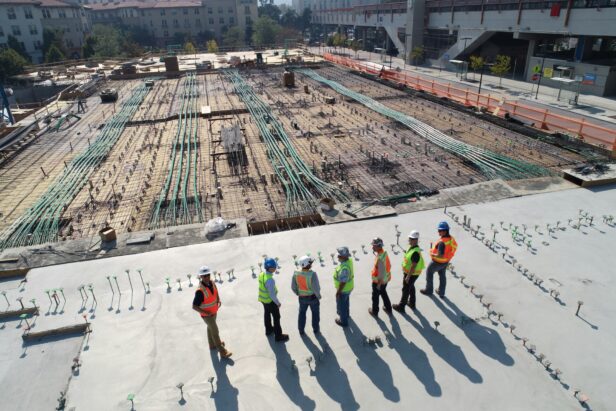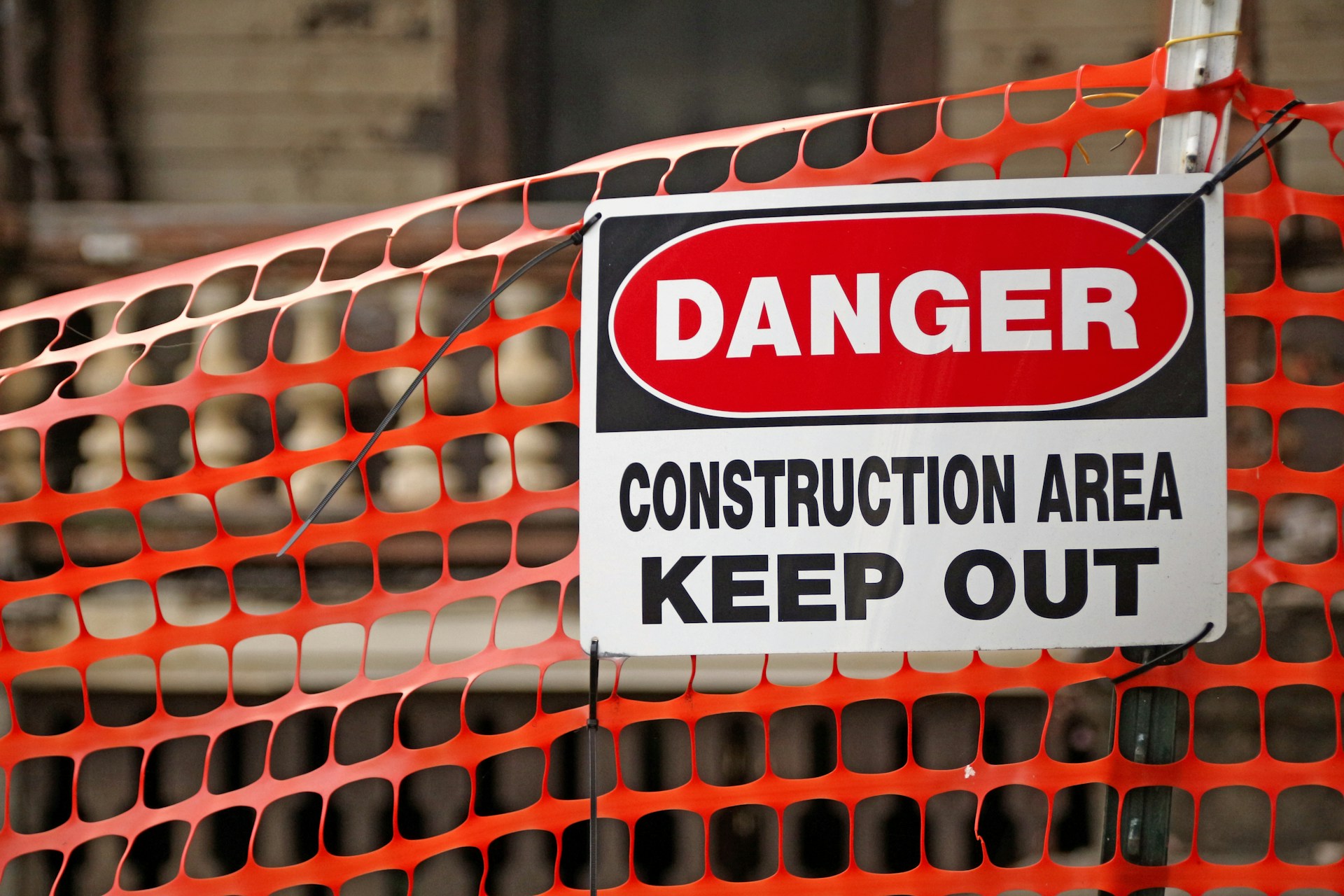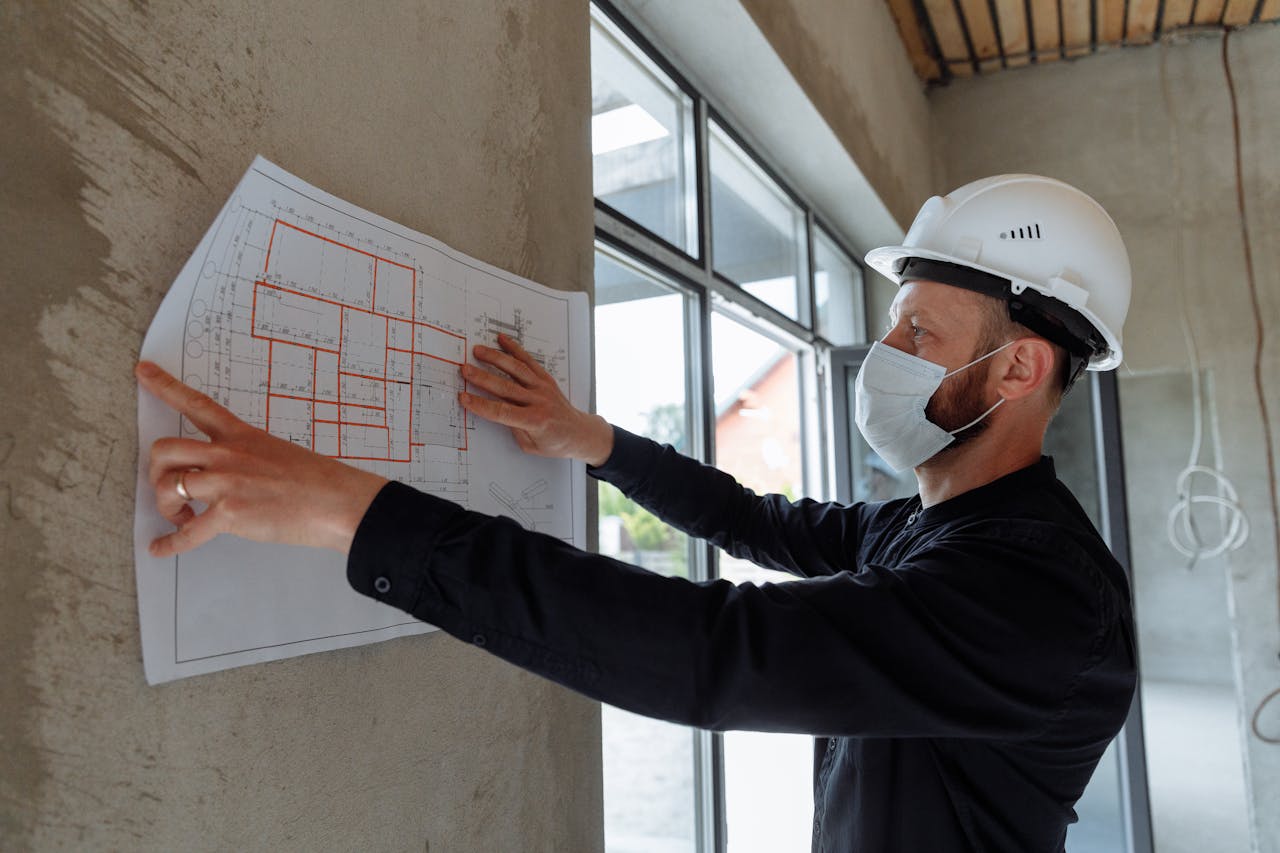Construction engineering and management (CEM) transforms complex infrastructure visions into reality through technical precision and systematic execution. When you see a massive bridge spanning a river or a gleaming airport terminal welcoming millions of travelers, CEM professionals coordinated every aspect from initial design concepts to final delivery.
This discipline applies engineering design principles alongside construction management to deliver projects on time and within budget across the built environment. CEM spans residential and commercial buildings, electrical systems, HVAC installations, large infrastructure projects, and airports, connecting the technical knowledge needed to build safely with the management skills required to coordinate resources, schedules, and teams throughout the project lifecycle.
How Does CEM Differ From Civil Engineering?
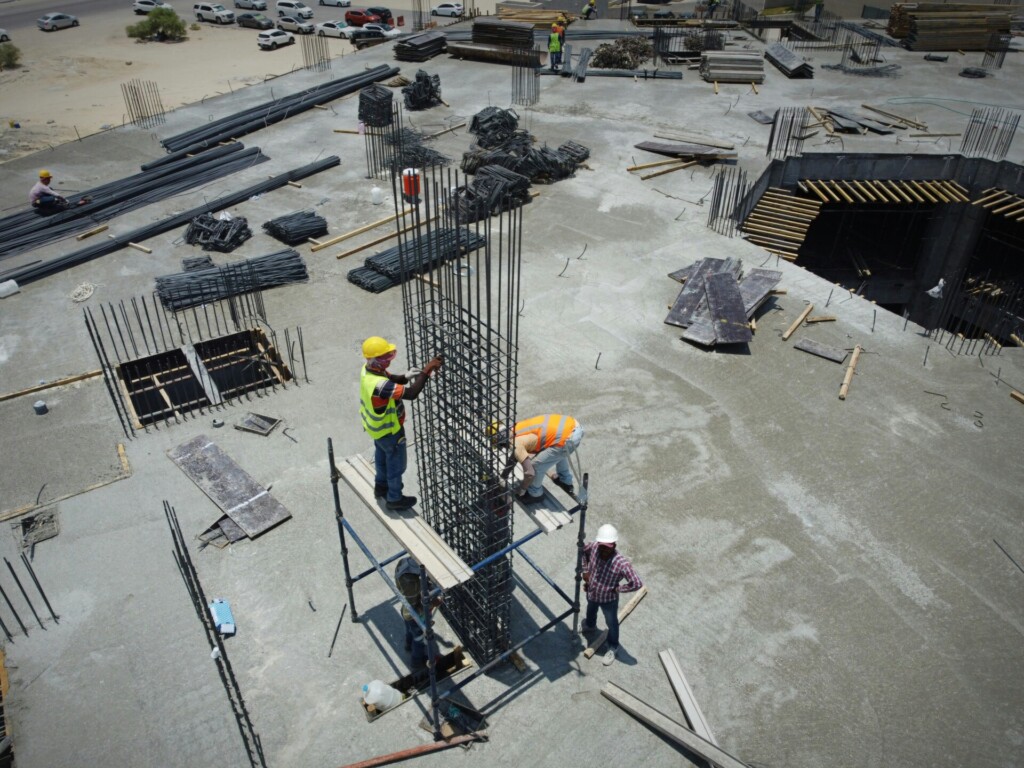
Civil engineering focuses on designing, planning, and analyzing infrastructure projects such as bridges, roads, dams, buildings, and water systems. Civil engineers apply scientific principles and technical knowledge to create safe and efficient structures. They concentrate on the theoretical and design aspects of construction projects.
Construction engineering and management bridges the gap between design management and construction execution. While civil engineers handle the blueprint phase, CEM professionals coordinate the physical building process. We manage sites and resources while keeping projects on schedule, within budget, and meeting quality standards.
Core Responsibility Differences
Civil engineers design infrastructure projects and focus on structural analysis and planning phases. They determine load calculations, material specifications, and ensure designs meet safety codes. Their work happens primarily in offices using computer-aided design software and engineering calculations.
CEM teams execute the construction work that brings those designs to life. We coordinate subcontractors, manage daily operations, and resolve field issues that arise during construction. Our focus extends to site management, resource coordination, and maintaining project timelines while civil engineers remain focused on design integrity.
Distinct Project Involvement
Construction engineers may also design and ensure safety of temporary structures during construction. We oversee scaffolding, formwork, and other temporary installations that civil engineers typically do not address. These structures support the construction process but are not part of the final building design.
Resource coordination becomes our primary concern during active construction phases. We track material deliveries, coordinate equipment usage, and manage workforce scheduling. Civil engineers rarely handle these operational aspects since their expertise centers on design analysis rather than construction logistics.
Communication oversight distinguishes CEM from traditional civil engineering roles. We maintain constant contact between field teams, office staff, and project stakeholders. This coordination ensures that design intent translates accurately into built reality while managing budget constraints and delivery schedules.
| Aspect | Civil Engineering | Construction Engineering Management (CEM) |
|---|---|---|
| Primary Focus | Designing, planning, and analyzing infrastructure projects such as bridges, roads, dams, and buildings. | Bridging the gap between design management and construction execution. |
| Core Responsibility | Structural analysis, load calculations, material specifications, and ensuring designs meet safety codes. | Coordinating construction projects by managing resources, schedules, and maintaining project timelines and quality. |
| Project Involvement | Focus primarily on design and planning phases. | Oversee the entire project lifecycle from design through execution. |
| Additional Roles | Design infrastructure projects and use computer-aided design software for planning. | Manage communication, resolve on-site issues, and oversee temporary structure design. |
| Work Environment | Mainly office-based with computer software usage. | Involves both office work and on-site management. |
What Does A Construction Engineering Manager Do Across The Lifecycle?
Construction engineering managers handle distinct responsibilities that span the entire project timeline, from initial site assessment through final closeout. These professionals coordinate technical expertise with field operations to ensure successful delivery.
Pre-Construction Phase Responsibilities
We survey the jobsite thoroughly before any construction begins. This comprehensive assessment examines soil conditions, existing utilities, and environmental factors that could impact the build. Site conditions dictate many downstream decisions about equipment access, staging areas, and construction methods.
Environmental issues receive immediate attention during these early surveys. We identify potential hazards like contaminated soil, protected wetlands, or historical preservation requirements. Flagging these concerns early prevents costly delays once construction starts.
Compliance verification forms a critical part of pre-construction work. We confirm that all design elements meet local codes and regulations before submitting for permits. This includes reviewing structural calculations, fire safety systems, and accessibility requirements against current standards.
Permit acquisition demands coordination with multiple agencies. We generate detailed reports that demonstrate code compliance and submit applications to building departments, environmental agencies, and utility companies. Each permit has specific documentation requirements and approval timelines that we track closely.
Team Assembly And Coordination
Building the right engineering team requires matching expertise to project needs. We assemble qualified engineers with experience in the specific building types, systems, and local regulations relevant to each project. Team composition varies based on project complexity and scope.
Communication protocols establish how information flows between field and office teams. We set up regular reporting schedules, define decision-making authority, and create channels for rapid issue resolution. Clear communication prevents misunderstandings that lead to rework.
Milestone establishment gives the team concrete targets for progress measurement. We define key checkpoints for design completion, permit approval, construction phases, and quality inspections. These milestones align with overall project schedules and budget commitments.
Construction Phase Management
Site inspections occur regularly throughout the construction process. We tour active work areas to verify that installation matches approved drawings and specifications. These inspections catch deviations before they become expensive corrections.
Quality control inspections focus on critical building systems and structural elements. We examine concrete pours, steel connections, mechanical installations, and finishing work against project standards. Documentation of these inspections creates records for final approvals.
Issue resolution requires quick response when problems arise. We coordinate between field teams and design professionals to develop solutions that maintain schedule and budget targets. Fast decision-making prevents work stoppages that cascade through the project timeline.
Field-office coordination ensures that construction teams have current information and design support. We facilitate regular meetings between superintendents, foremen, and engineering staff to address questions and approve construction methods. This alignment keeps work progressing smoothly.
Lifecycle Stage Integration
These responsibilities support the standard project lifecycle stages recognized throughout the construction industry. During design phases, we provide constructability input and cost feedback. Pre-construction activities focus on permits, team building, and detailed planning.
Procurement oversight ensures that materials and equipment meet specifications and arrive on schedule. During construction and building phases, we maintain quality control and resolve technical issues. Commissioning requires coordination with testing agencies and building systems startup.
Owner occupancy preparation involves final inspections, documentation handover, and systems training. Project closeout demands completion of punch list items, final permit approvals, and warranty documentation. Each stage requires specific engineering management expertise to achieve successful outcomes.
What Are The Common Challenges In CEM?
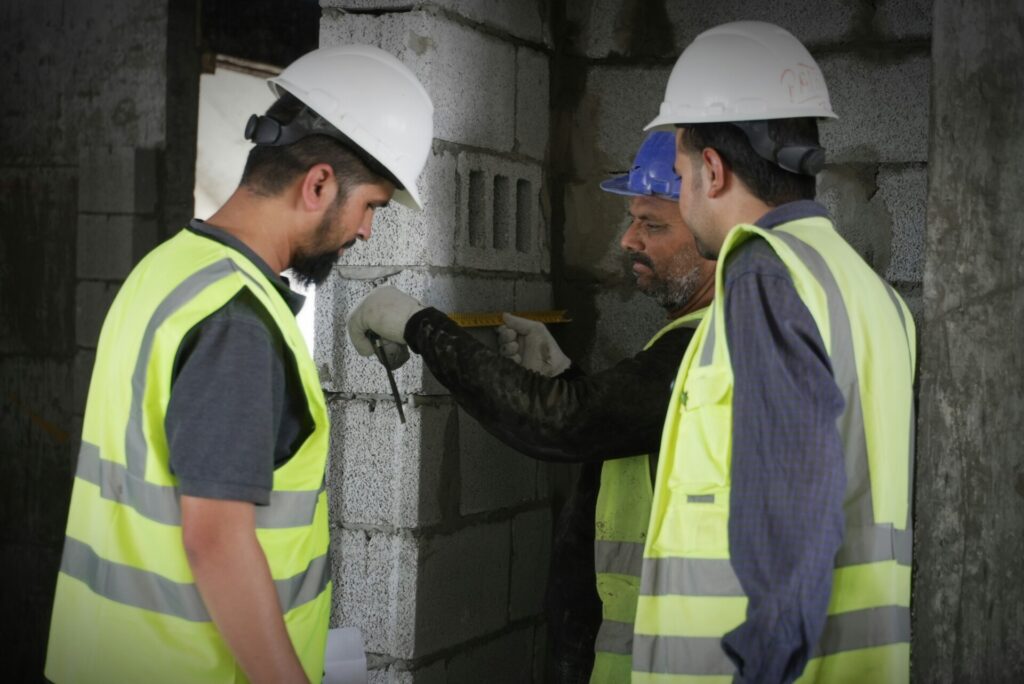
Construction engineering management faces four critical challenges that can derail even well-planned projects. Budget constraints demand meticulous attention from initial estimating through final closeout. Safety enforcement requires constant vigilance across every phase of work.
Project delays emerge from factors often beyond direct control, while quality control demands balancing standards compliance with practical constraints. Each challenge requires specific approaches to minimize impact on project success.
Budget Constraints And Cost Management
Construction budgets face pressure from multiple directions during project execution. Material cost fluctuations can shift expenses by 10-20% between initial estimates and actual procurement. We plan for these variations through detailed cost estimation processes that include contingency allocations.
Resource allocation becomes critical when unexpected expenses arise. Change orders frequently impact budgets when design modifications occur during construction. Effective cost management requires tracking expenses against milestones and identifying potential overruns before they become project-threatening issues.
Accurate estimating at the project outset provides the foundation for successful budget management. We analyze historical data from similar projects to improve cost predictions and build realistic contingency plans that account for common cost variables.
Safety Protocol Implementation And Enforcement
Construction sites present inherent risks that require systematic management approaches. Safety protocols must be enforced through regular training sessions and consistent site inspections. Workers face hazards from heavy equipment, elevated work areas, and material handling operations.
Training programs need regular updates to address evolving safety standards and new construction methods. Site inspections identify potential hazards before they cause injuries or work stoppages. We coordinate with safety officers to ensure compliance with OSHA regulations and company-specific safety requirements.
Documentation of safety measures protects both workers and project stakeholders. Regular safety meetings reinforce proper procedures and allow teams to report potential concerns before they escalate into serious incidents.
Managing Project Delays And Supply Chain Disruptions
Weather conditions can halt outdoor construction activities for days or weeks, particularly during seasonal transitions. Supply chain disruptions affect material deliveries and can cascade through project schedules. Recent years have shown how global supply issues can impact local construction timelines.
Proactive scheduling builds flexibility into project timelines to accommodate these inevitable delays. We develop contingency plans that identify alternative suppliers and adjust work sequences when materials arrive late. Critical path analysis helps prioritize activities that cannot afford delays.
Communication with suppliers becomes essential for managing delivery schedules. We track material orders and coordinate with procurement teams to identify potential shortages before they impact field operations.
Quality Control While Managing Time And Budget Pressures
Quality control requires rigorous inspection processes at every construction phase. Standards compliance cannot be compromised despite schedule pressures or budget constraints. We implement inspection protocols that catch defects early when corrections cost less.
Regular inspections prevent small issues from becoming major rework requirements. Quality measures must align with project specifications while maintaining realistic timelines. Documentation of quality checkpoints provides evidence of standards compliance for project stakeholders.
Balancing quality with schedule demands requires strategic planning of inspection activities. We coordinate inspections with work progress to minimize disruption while ensuring thorough coverage of all quality requirements.
Which Strategies And Tools Improve CEM Outcomes?
Success in construction engineering and management requires strategic planning combined with the right technological tools. We implement specific strategies that consistently deliver superior project outcomes while maintaining efficiency and safety standards.
Early Planning And Coordination
Effective CEM starts with comprehensive planning before any ground breaks. We establish clear schedules that map every phase from design to completion, identifying critical milestones that keep teams accountable. Role assignments clarify who handles each aspect of the project, eliminating confusion and overlap.
Strong coordination means regular check-ins between all stakeholders. We create structured communication paths that ensure information flows seamlessly between architects, engineers, contractors, and clients. This upfront investment in planning prevents costly changes and delays later in the project lifecycle.
Building Information Modeling (BIM) Implementation
BIM transforms how we approach construction projects by creating a shared digital environment for all stakeholders. This technology enhances collaboration from initial design through final installation, allowing teams to visualize potential conflicts before they occur on-site.
We use BIM to coordinate between disciplines, ensuring mechanical, electrical, and plumbing systems integrate properly with structural elements. The 3D modeling capability helps identify clashes early, reducing rework and material waste. Teams can access real-time updates to design changes, keeping everyone working from the most current information.
Construction Management Software Solutions
Modern construction management software automates routine tasks that previously consumed significant time and resources. These platforms increase data visibility across all project elements, providing real-time insights into progress, costs, and resource allocation.
We leverage these tools to tighten communication between field and office teams. Digital platforms enable instant reporting of progress updates, safety incidents, and quality issues. Automated scheduling features help optimize resource deployment and identify potential bottlenecks before they impact timelines. Document management systems ensure all team members access current plans, specifications, and change orders.
Fostering Team Collaboration
Regular touchpoints maintain project momentum and address issues before they escalate. We establish weekly progress meetings where all stakeholders review completed work, discuss upcoming tasks, and resolve any conflicts or concerns.
Shared goals align every team member toward common objectives. We create project dashboards that display key performance indicators, allowing teams to track progress against established benchmarks. This transparency builds accountability and encourages collaborative problem-solving when challenges arise.
Safety Protocol Implementation
We prioritize safety through comprehensive protocols that protect workers and reduce liability exposure. Regular training sessions keep safety practices current with industry standards and regulatory requirements. These sessions cover both general construction safety and project-specific hazards.
Ongoing training reinforces safety culture throughout the project duration. We conduct toolbox talks, safety inspections, and incident analysis to continuously improve our safety performance. Digital safety management tools help track training completion, incident reporting, and compliance documentation, ensuring we maintain consistent safety standards across all projects.
Conclusion and Next Steps

Construction engineering and management connects design and construction to deliver safe, quality projects on time and within budget. This discipline combines the technical precision of engineering with the practical oversight of construction management. We use rigorous planning processes, enforce safety protocols, leverage technology tools, and foster teamwork across all project phases to achieve successful outcomes.
Building expertise in construction engineering and management requires continuous career development and skills enhancement. The Project Management Professional (PMP) certification validates comprehensive project management capabilities across industries. The Certified Construction Manager (CCM) credential specifically recognizes construction management expertise and leadership. Both certifications strengthen technical competencies while demonstrating commitment to professional excellence. Consider expanding skills in construction management software tools, building information modeling, and emerging technologies that support project lifecycle coordination from design through closeout.
Contact EB3 Construction to learn how our expertise in construction engineering and management can support your next project.

